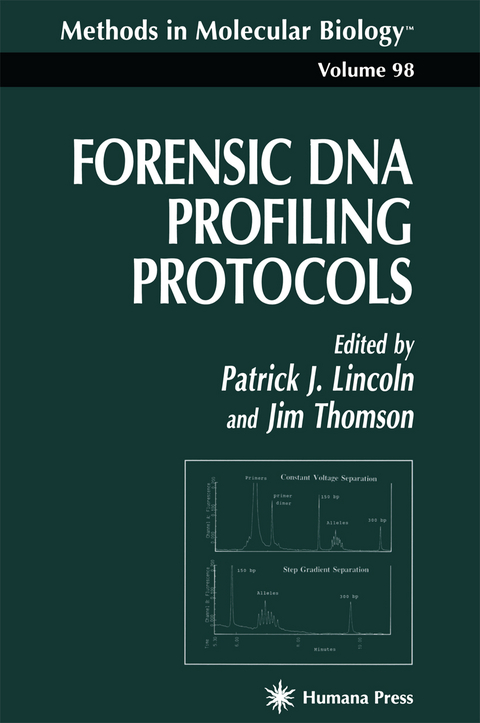
Forensic DNA Profiling Protocols
Humana Press Inc. (Verlag)
978-1-61737-038-0 (ISBN)
Recovery of High-Molecular-Weight DNA from Blood and Forensic Specimens.- Recovery of DNA for PCR Amplification from Blood and Forensic Samples Using a Chelating Resin.- PCR Analysis of DNA from Fresh and Decomposed Bodies and Skeletal Remains in Medicolegal Death Investigations.- PCR Analysis from Cigaret Butts, Postage Stamps, Envelope Sealing Flaps, and Other Saliva-Stained Material.- Quantification of DNA By Slot-Blot Analysis.- Rapid Assessment of PCR Product Quality and Quantity by Capillary Electrophoresis.- Southern Blotting of Genomic DNA for DNA Profiling.- Preparation and Use of Alkaline-Phosphatase-Conjugated Oligonucleotide Probes for Single-Locus and Multilocus VNTR Analysis.- Preparation and Use of 32P-Labeled Single-Locus VNTR Probes in Identity Testing.- Statistical Methods Employed in Evaluation of Single-Locus Probe Results in Criminal Identity Cases.- Interpretation and Statistical Evaluation of Multilocus DNA Fingerprints in Paternity and Relationship Testing.- Overview of PCR-Based Systems in Identity Testing.- An Introduction to PCR Primer Design and Optimization of Amplification Reactions.- Analysis of Amplified Fragment-Length Polymorphisms (VNTR/STR Loci) for Human Identity Testing.- Amplification of Short Tandem Repeat Loci Using PCR.- Manual Electrophoretic Methods for Genotyping Amplified STR Loci.- 17 Genotyping STR Loci Using an Automated DNA Sequencer.- Separation of PCR Fragments by Means of Direct Blotting Electrophoresis.- 19 Amplification and Sequencing of Mitochondrial DNA in Forensic Casework.- Minisatellite Variant Repeat Unit Mapping Using PCR (MVR-PCR).- Sex Determination by PCR Analysis of the X-Y Amelogenin Gene.- Species Determination by Analysis of the Cytochrome b Gene.- Use of the AmpliType PM + HLA DQA1 PCR Amplification and Typing Kits for Identity Testing.- The Use of Capillary Electrophoresis in Genotyping STR Loci.- Solid-Phase Minisequencing as a Tool to Detect DNA Polymorphism.
"For the first time the major laboratory procedures used in human identification are brought together in one book. . .contains much valuable information."-Journal of the Forensic Science Society
| Reihe/Serie | Methods in Molecular Biology ; 98 |
|---|---|
| Zusatzinfo | X, 309 p. |
| Verlagsort | Totowa, NJ |
| Sprache | englisch |
| Maße | 152 x 229 mm |
| Themenwelt | Naturwissenschaften ► Biologie ► Mikrobiologie / Immunologie |
| Naturwissenschaften ► Biologie ► Zellbiologie | |
| ISBN-10 | 1-61737-038-X / 161737038X |
| ISBN-13 | 978-1-61737-038-0 / 9781617370380 |
| Zustand | Neuware |
| Haben Sie eine Frage zum Produkt? |
aus dem Bereich


